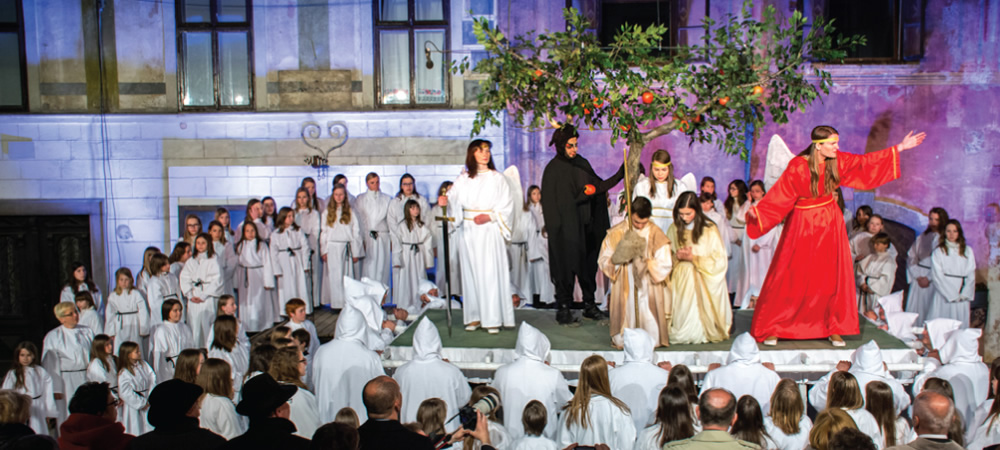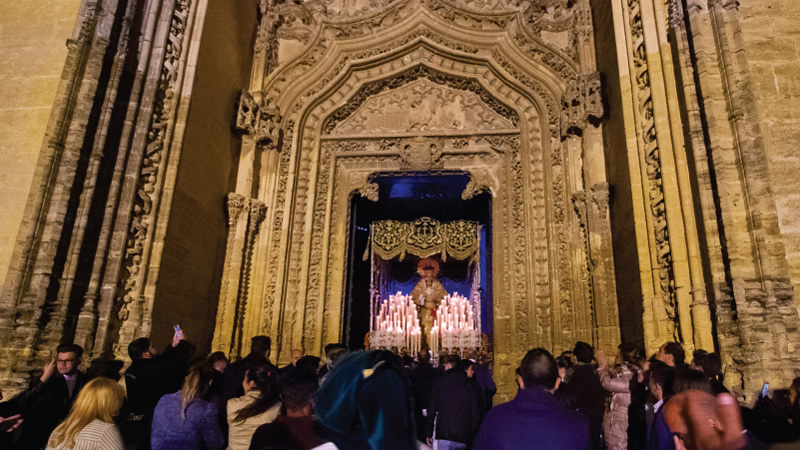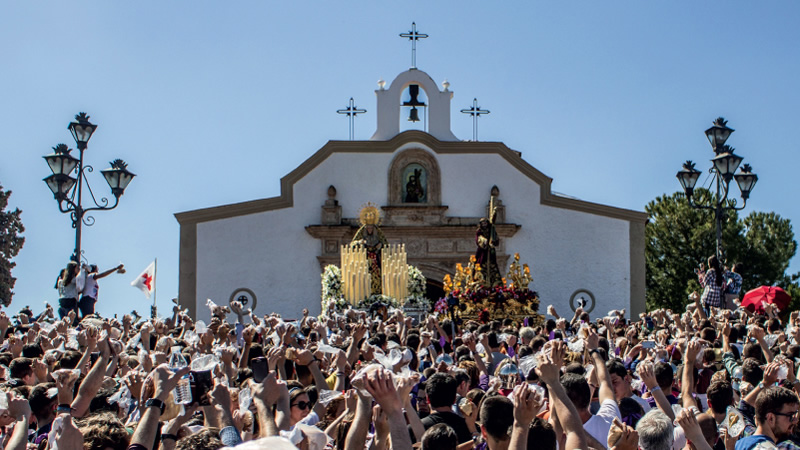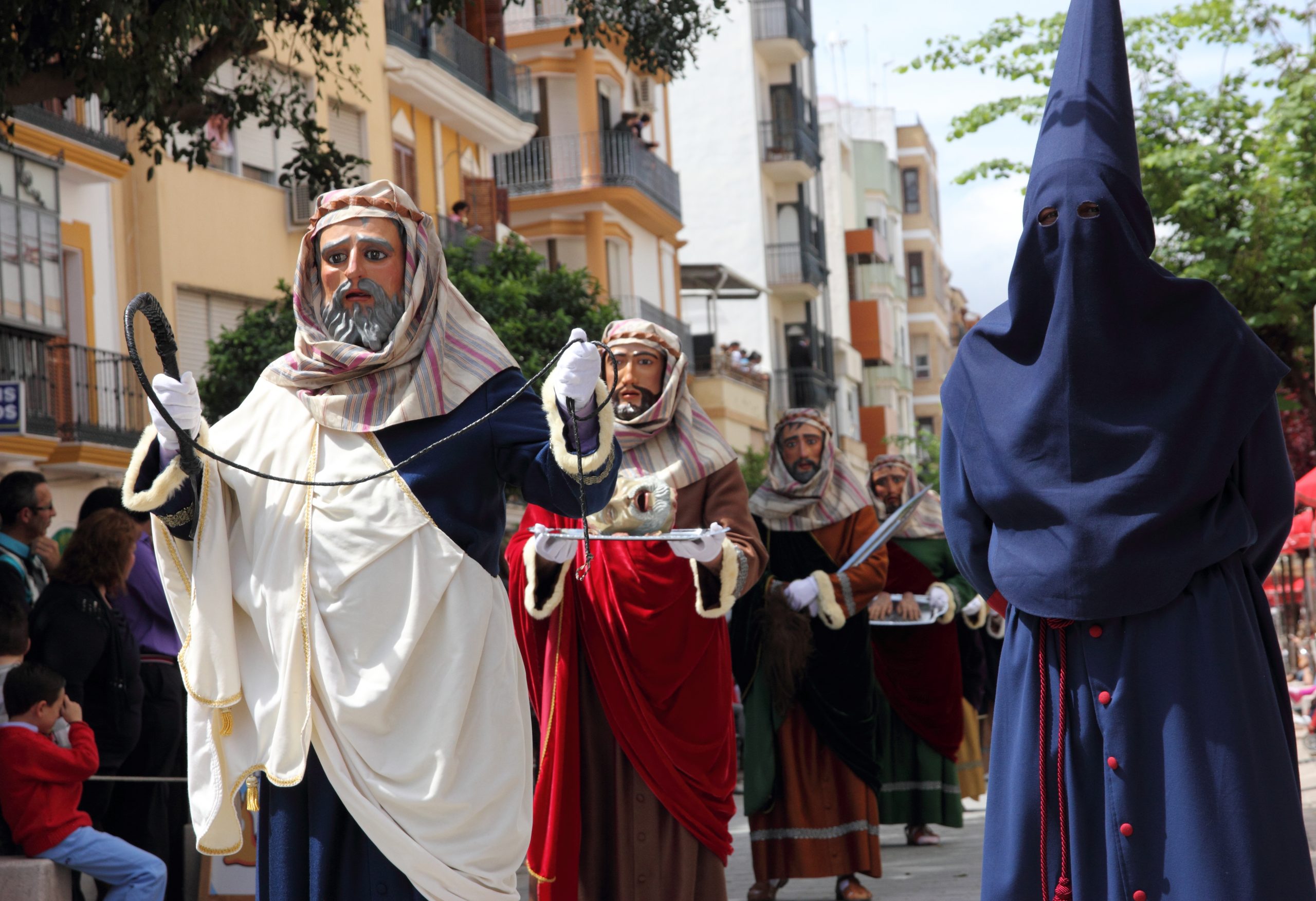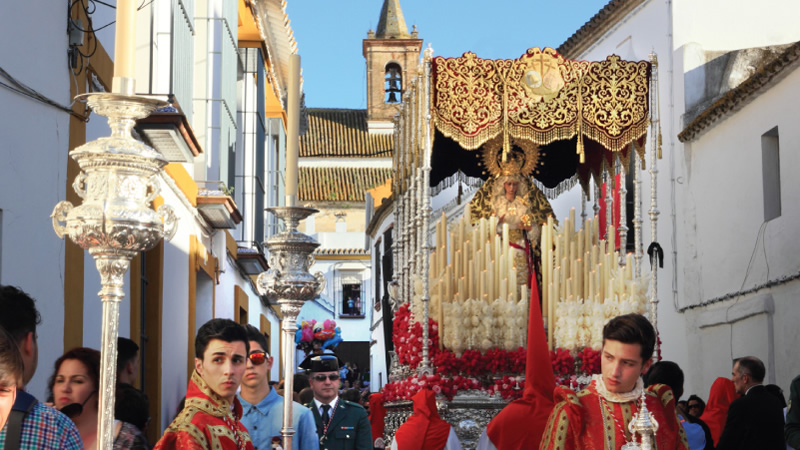
Holy Week in Carmona is a way of the cross of passions distributed among its stone walls, narrow streets and hidden squares in an exercise of sobriety, devotion and beauty. The monumentality of the city is an exceptional setting for the flow of its eight brotherhoods.
The undoubted artistic interest of this emblematic celebration is reflected in an admirable imagery, of which the oldest dated piece that processions in Andalusian Holy Week stands out: El Señor de la Amargura, made in 1521 by Jorge Fernández Alemán. It is also necessary to mention the trousseau that surrounds and accompanies the steps. Thus, embroidery, wood carvings, and especially goldsmithing, are part of this beautiful set.
Carmona turns to his Holy Week in a special way through the care and pampering of his courtships. The processions that take place during these days are a faithful reflection of the idiosyncrasy of the place, heirs of its lax history and the exquisite character of its neighbors. Because the trace of the times has left a dent in all corporations and, despite the fact that the forms have been molded with the times, it preserves an important part of the goods that devotion has generated.
Holy Week begins with the end of the septenary for the head of the Servitas who, without a canopy, walks through the winding and beautiful streets of it neighborhood. All the brotherhoods of the town carry out a penance station at the priory church in the afternoon of each day, previously passing through the official route. The processions are made up in the Sevillian way: Nazarenes divided into sections by insignia, altar boys, steps carried by bearers and music bands. And yet, each one retains its own character that makes it unique.
Thus, on Sunday, after the palm processions of the five parishes of the town and in the cloistered convents, La Esperanza puts on the street the joy of the tradition, which becomes latent in the many petaladas along its route. Already on Monday, the procession of La Amargura leaves from the pointed gate of San Felipe to tour suburbs and the historic center with great serenity. And on Tuesday, the Jewish quarter turns to the Expiración, which nurtures its ranks of the youngest members of the community and which overwhelms the city with its ravaged collection. In the middle of the week, Quinta Angustia has a half-silent, half-festive journey that breaks into ecstasy on Tahona Street. As it happens, the next day, in the Santiago neighborhood after the in coenadomini celebration.
Once the Monuments are closed, when the liturgy imposes mourning on Friday, Humildad y Paciencia perform their station, with mourning marked on its imposing drawer canopy, and Nuestro Padre with his silent journey. On Saturday afternoon, the Santo Entienrro, accompanied by nazarenes from all the corporations, closes the cycle of processions, turning mourning into joy after the Resurrection.
 The origin
The origin
On March 11, 1521, a group of 1,500 Carmonenses marched on a pilgrimage to Seville to implore the Virgen de la Antigua for the long-awaited rain. Upon their return, the residents were fired by the Spanish authorities at the Cruz del Campo humiliation site. This celebration is understood as the most remote precedent of a penitential procession in the town.
Old and new uses
Until the 80s of the 20th century, the processions in Carmona were carried on the shoulders by means of poles inserted perpendicularly inside the stretchers.
Imagery
One of the main values of Holy Week in Carmona are its devotional images. Christiferous, Marian and secondary figures that belong to the hands of the most prestigious sculptors who have passed through western Andalusia. Thus, the town preserves the oldest carving of those that procession during the Week, the Cristo de la Amargura, a work by Jorge Fernández Alemán from 1521. Or the late-Mannerist sculpture of Nuestro Padre Jesús Nazareno made by Francisco de Ocampo in 1607, which it is the preceding model of this iconography.
But the great period for imagery is the Baroque, of which important works by José de Arce, José Montes de Oca, Pedro Roldán, Francisca Roldán, Felipe Duque Cornejo, Benito Hita del Castillo and Manuel García de Santiago are preserved.
In the most contemporary stage, the city learned about the work of its neighbors Francisco Buiza and Antonio Eslava, as well as that of Antonio Castillo Lastrucci.
Processions
As if it were a royal procession in mourning, the Carmona processions accompany the scenes of the Passion, either as Nazarenes, as costaleros or altar boys wearing insignia and carrying history.
The pallium of the Nazarenes, from 1698, and the procession of the Santo Entierro stand out, relics of brotherhood archeology. Likewise, the rococo simpecado of the Expiración, the nineteenth-century mantle of the Virgen de la Paciencia, by the Antúnez sisters, and the falls from the pallium ceiling of the image of Las Angustias, which came out of the Olmo workshops in 1930, are essential and that is the first in this technique.
Monuments
Parishes and convents retain the custom of raising monuments to the Blessed Sacrament after Mass in coenadomini on Holy Thursday. While they are open, the influx of the public is constant, especially women dressed in mantillas, and in them you can see ornamental jewels among abundant flowers and candles.
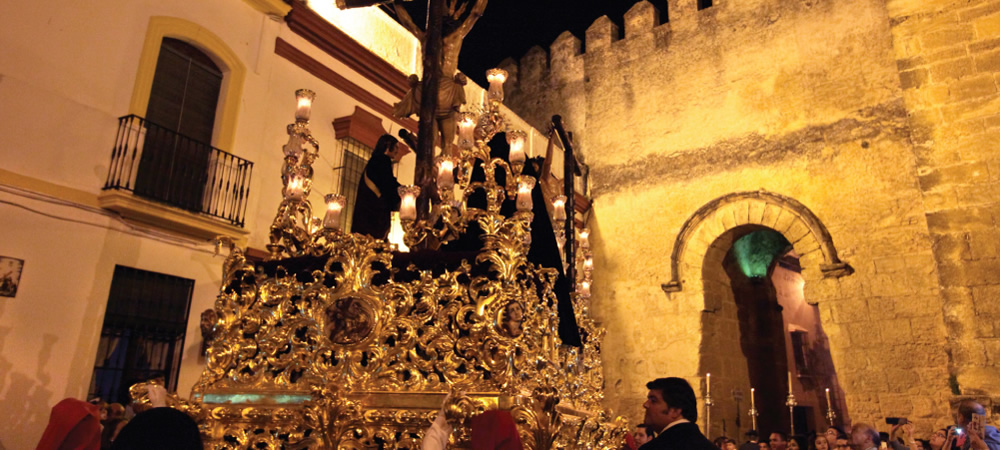 m
m


